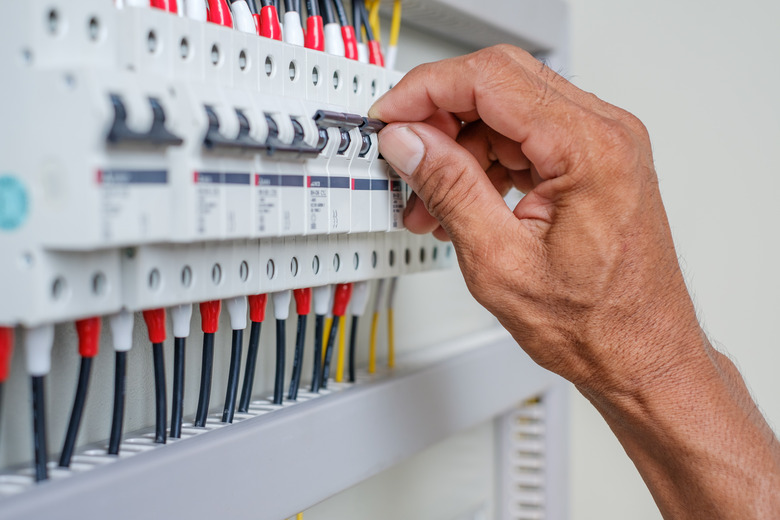What Size Wire & Circuit Breaker Do You Need For Electric Stoves?
The wiring for an electric stove outlet is very different from the normal wall outlets in your home. Like some other appliances in the home, such as your electric water heater and central air conditioning system, most electric stoves require 240 volts of power.
Unlike those other 240-volt-powered appliances, most electric stoves require an outlet instead of being hardwired by an electrician. No matter what is being wired, it all needs to be matched for the amount of energy it is capable of consuming. The wire size needs to match the breaker, which needs to match the current draw of the appliance, which in this case is also matched to the electric stove outlet.
Warning
High-voltage wiring can cause serious injury, and if not handled and sized properly, it can cause damage to property.
Electric Stove Wiring Requirements
Electric Stove Wiring Requirements
Current is measured in amps, and these amps are what determine the electric stove wiring requirements. Most electric stoves can draw anywhere from 30 to 50 amps. Some may draw even more depending on the features of the electric stove. All electric stoves require four conductors and will need to be attached to a NEMA-14 outlet that meets your specific electric stove amperage requirements. These requirements can be found in the installation manual and the manufacturer's label on the appliance.
Example of Electric Range Wire Size
Example of Electric Range Wire Size
If your electric range requirements are 30 amps, you will need to size an entire dedicated circuit that is rated for 30 amps. Depending on the type of wire available, you will need to size that wire, outlet, and breaker for those 30 amps.
If you use copper wire and the distance to the electric stove outlet from the breaker panel is under 100 feet, you can use 10-gauge wire. For that same circuit, if you use aluminum wire, you will need 8-gauge wire. Wire gauge number decreases as the wire size increases. There is no harm in increasing the wire size, but there is a danger in decreasing the wire size. If you are uncertain, then it might be best to hire a professional.
Electric Stove Outlet Requirements
Electric Stove Outlet Requirements
If you find yourself replacing an old electric stove, you may find that the old outlet will not work. Some older electric stoves were simple three- or four-prong-style connectors, but with the newer features of a more modern electric stove, you may find that a different plug is necessary: one that is specific to your new appliance plug.
These four prongs are more simply described as hot, hot, neutral, and ground and are configured so that you cannot plug a 50-amp plug into a 30-amp outlet. Before running off to the local hardware store to get a new outlet, make sure that the dedicated circuit is going to match all the electric stove requirements. Using wire rated for a 30-amp circuit will not safely handle new electric stove wiring requirements for a stove that requires 40 amps. If you find yourself in this predicament, it may be time for professional assistance.
Electric Stove Wiring Diagram
Electric Stove Wiring Diagram
When looking at the wiring diagram for your new electric stove, you are going to find that there are four wires. Each of these wires has a purpose. The plug is simply hot, hot, neutral, and ground. Your home's electrical has exactly that as well: two hot leads, which create roughly 240 volts, a neutral, and a ground.
The dedicated circuit breaker for the electric stove will have two hot leads that are terminated to the two-pole circuit breaker, typically colored black and red. The white wire will terminate to the respective neutral bar, and the ground will terminate to the grounding bar. The same goes for wiring the electric stove's plug to the appliance and may be color-coded to make things even more simple.
